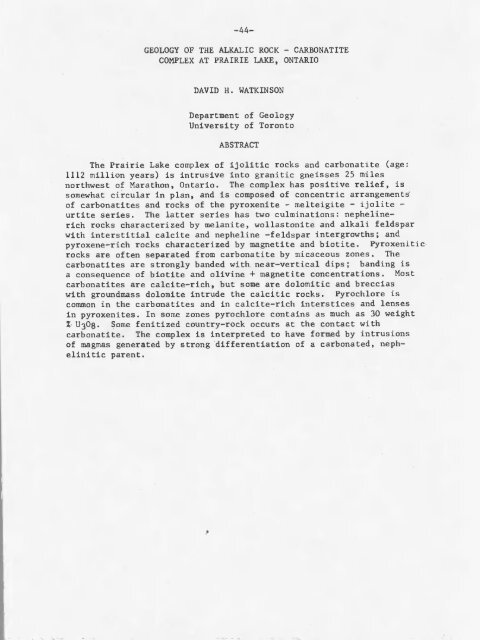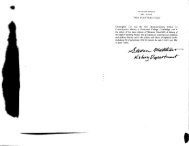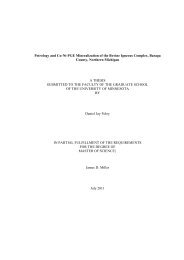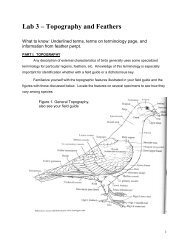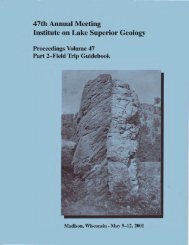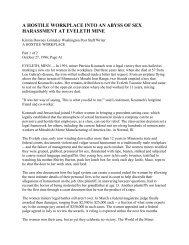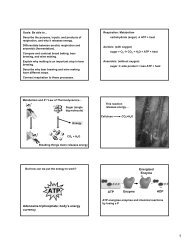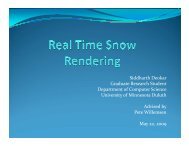Program, Abstracts, and Guidebooks - University of Minnesota Duluth
Program, Abstracts, and Guidebooks - University of Minnesota Duluth
Program, Abstracts, and Guidebooks - University of Minnesota Duluth
You also want an ePaper? Increase the reach of your titles
YUMPU automatically turns print PDFs into web optimized ePapers that Google loves.
—44—<br />
GEOLOGY OF TEE ALKALIC ROCK — CARBONATITE<br />
COMPLEX AT PRAIRIE LAKE, ONTARIO<br />
DAVID H. WATKINSON<br />
Department <strong>of</strong> Geology<br />
<strong>University</strong> <strong>of</strong> Toronto<br />
ABSTRACT<br />
The Prairie Lake complex <strong>of</strong> ijolitic rocks <strong>and</strong> carbonatite (age:<br />
1112 million years) is intrusive into granitic gneisses 25 miles<br />
northwest <strong>of</strong> Marathon, Ontario. The complex has positive relief, is<br />
somewhat circular in plan, <strong>and</strong> is composed <strong>of</strong> concentric arrangements<br />
<strong>of</strong> carbonatites <strong>and</strong> rocks <strong>of</strong> the pyroxenite — melteigite — ijolite —<br />
urtite series. The latter series has two culminations: nepheline—<br />
rich rocks characterized by melanite, wollastonite <strong>and</strong> alkali feldspar<br />
with interstitial calcite <strong>and</strong> nepheline —feldspar intergrowths; <strong>and</strong><br />
pyroxene—rich rocks characterized by magnetite <strong>and</strong> biotite. Pyroxenitic<br />
rocks are <strong>of</strong>ten separated from carbonatite by micaceous zones. The<br />
carbonatites are strongly b<strong>and</strong>ed with near—vertical dips; b<strong>and</strong>ing is<br />
a consequence <strong>of</strong> biotite <strong>and</strong> olivine + magnetite concentrations. Most<br />
carbonatites are calcite—rich, but some are dolomitic <strong>and</strong> breccias<br />
with groundmass dolomite intrude the calcitic rocks. Pyrochlore is<br />
common in the carbonatites <strong>and</strong> in calcite—rich interstices <strong>and</strong> lenses<br />
in pyroxenites. In some zones pyrochlore contains as much as 30 weight<br />
Z U3O. Some fenitized country—rock occurs at the contact with<br />
carbonatite. The complex is interpreted to have formed by intrusions<br />
<strong>of</strong> magmas generated by strong differentiation <strong>of</strong> a carbonated, neph—<br />
elinitic parent.


